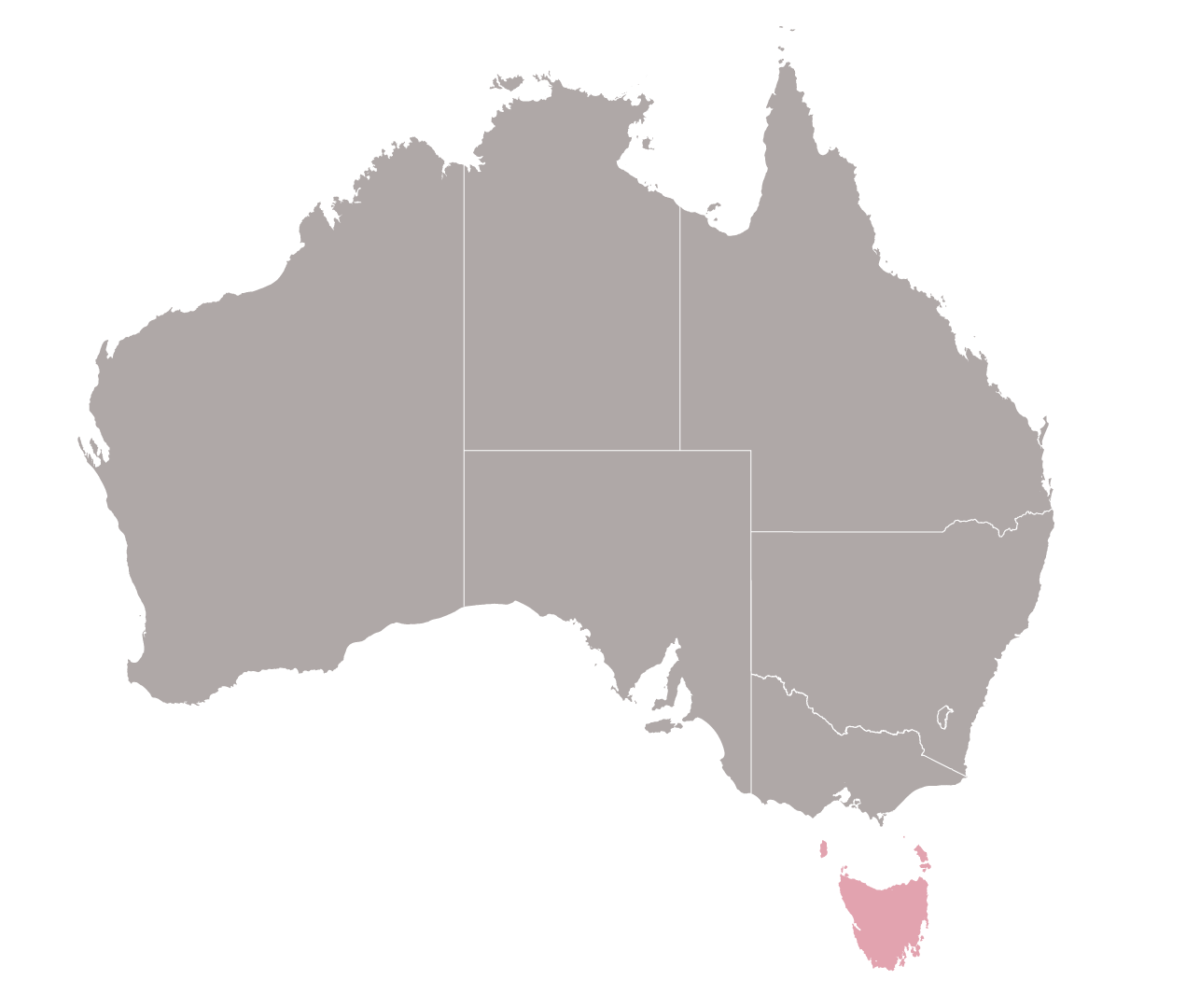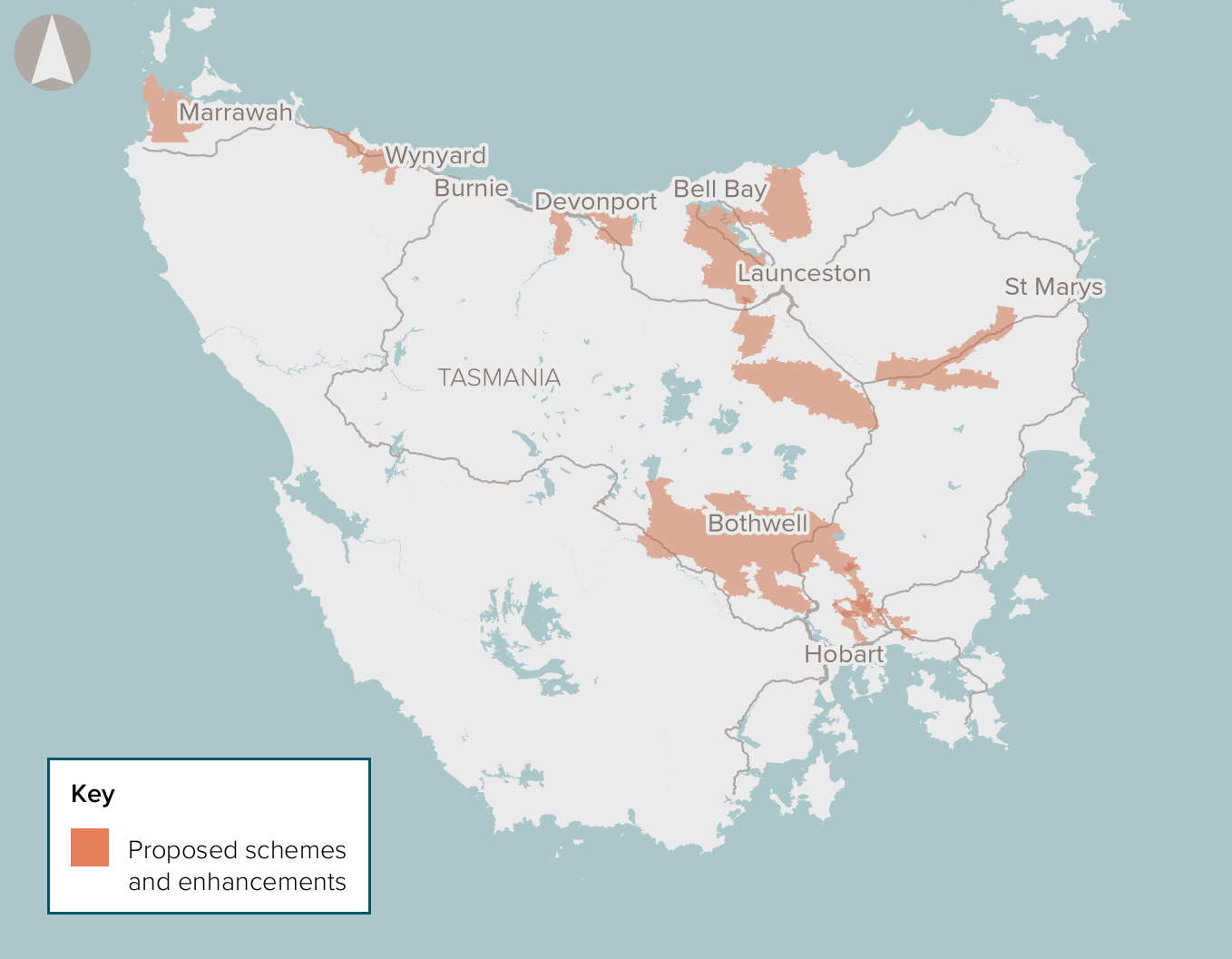

Water resources in Tasmania are not distributed seasonally or geographically as required for productive agricultural purposes.
The development of sustainable and well-managed water capture and distribution for use in irrigated agriculture provides the opportunity for dryland farms and landholders to expand and diversify their businesses by switching from dry-land, lower-value enterprises to higher-value enterprises such as fruit or viticulture.
This can improve both the operational performance and efficiency of existing irrigation and the productive capacity of Tasmania’s agriculture sector more broadly.
This program proposal is for a potential range of improvements to enable the expansion of the irrigable area of Tasmania and support the distribution of water to the highest productive use. These include constructing additional irrigation schemes and connecting, augmenting and enhancing existing irrigation schemes.
The individual components of the program, including their costs and benefits, are still subject to investigation through business case development.
The second tranche of Tasmanian irrigation schemes was previously identified on the Infrastructure Priority List, and has been successfully delivered.
Proponent to complete business case development (Stage 3 of Infrastructure Australia’s Assessment Framework). One scheme has secured private sector funding to support a business case while two others are planned to go to the market in 2020.


 EVALUATION COMPLETE
EVALUATION COMPLETE




